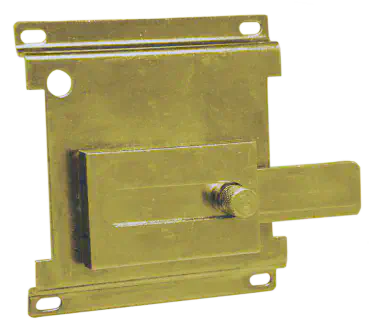Plastic Case Circuit Breaker with Residual Current Protection
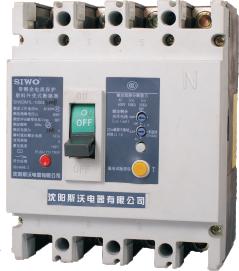
Residual Current Protection Molded Case Circuit Breaker: ZSEE M1L Series (hereinafter referred to as the circuit breaker) adopts a thermal magnetic trip mechanism. This product features an attractive appearance, compact structure, long service life, low rated power consumption, stable performance, and easy installation, providing users with safe and reliable protection.
- This circuit breaker has an isolation function.
- It has ON and OFF position indicators, and when the contacts are open, the handle indicates the ON and OFF positions. The position indicated by the rotary handle or operating mechanism remains consistent with the body, ensuring product reliability is not affected.
- The circuit breaker cannot be connected with reversed wiring; only poles 1, 3, and 5 should be connected to the power line, and poles 2, 4, and 6 to the load line.
- The circuit breaker can be installed either vertically or horizontally.
- It has current-limiting capabilities. The entire series is designed with a current-limiting action mechanism, which extinguishes the arc before the short-circuit current reaches its peak, reliably limiting the impact of short-circuit current on the circuit. As shown in the diagram, the actual short-circuit current peak interrupted by the current-limiting mechanism and the expected short-circuit current peak curve indicator.
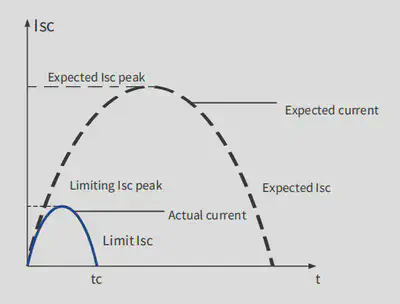
Compliance Standards
GB/T14048.1 “Low-voltage switchgear and controlgear - Part 1: General rules” (IEC60947-1:2011, MOD)
GB/T14048.2 “Low-voltage switchgear and controlgear - Part 2: Circuit breakers” (IEC60947-2:2006, IDT)
Environment and Applications
- Ambient air temperature does not exceed +40°C, and the average temperature over 24 hours does not exceed +35°C.
- The lower limit of ambient air temperature is -5°C. If the ambient air temperature exceeds +40°C but is less than +60°C, the rated current should be appropriately reduced according to the derating factor table.
- Resistant to humid air.
- Resistant to salt spray and oil mist.
- Operates in media without explosion hazards, and in environments free of gases or conductive dust that can corrode metals and damage insulation.
- Installed in locations free from rain or snow exposure.
- Installation altitude does not exceed 2000m.
- Maximum inclination of 22.5°.
- Operating environment: pollution degree 3.
- Installation category: III.
Main Features of the ZSEEM1L Series Residual Current Protection Circuit Breaker
- The ZSEEM1L series residual current protection molded case circuit breaker (hereinafter referred to as RCCB) can perform leakage protection. The conventional residual current protection circuit breaker’s leakage protection module samples power from two phases, whereas the leakage protection module of this series can function normally with three phases, even if one phase is missing.
- Adjustable on-site: The rated residual operating current Δn and residual current operating time (non-delayed and delayed) can be adjusted according to actual conditions.
- Low voltage protection: When the phase voltage drops to 50V, the leakage protection module can still operate normally.
- Equipped with a leakage alarm output function: When the residual current of the equipment or line reaches or exceeds the set value, the circuit breaker with a leakage alarm unit module outputs a passive contact signal to drive the corresponding alarm device.
Application Range of ZSEEM1L Series Residual Current Protection Circuit Breaker
The ZSEEM1L series RCCB, with a rated insulation voltage of 800V, is suitable for circuits with AC frequency of 50/60Hz, rated working voltage of 400V, and rated working current up to 630A, for infrequent operation and motor startup. The circuit breaker provides overload, short circuit, and undervoltage protection, ensuring that circuits and power equipment are not damaged. It also offers indirect contact protection for humans and protects against fire hazards that may arise from long-term ground faults undetectable by overcurrent protection. When other protection devices fail, the ZSEEM1L RCCB with a rated residual operating current of 30mA can provide direct additional protection.
According to its rated ultimate short-circuit breaking capacity, the RCCB is divided into two types: M type (higher breaking capacity) and H type (high breaking capacity, no H type for four poles).
This circuit breaker is characterized by its small size, strong breaking capacity, short arc distance, and vibration resistance.
Structural Overview of ZSEEM1L Series Residual Current Protection Circuit Breaker
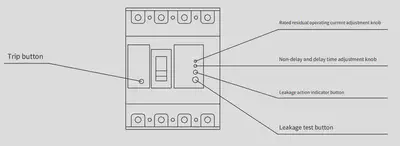
Model Description of ZSEEM1L Series Residual Current Protection Circuit Breaker
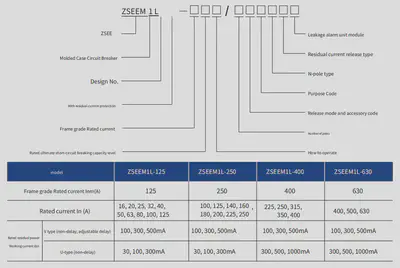
Quick Selection Table for ZSEEM1L Series Residual Current Protection Circuit Breaker
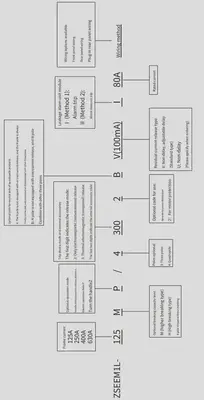
Tripping Mechanism and Internal Accessories Code of ZSEEM1L Series Residual Current Protection Circuit Breaker
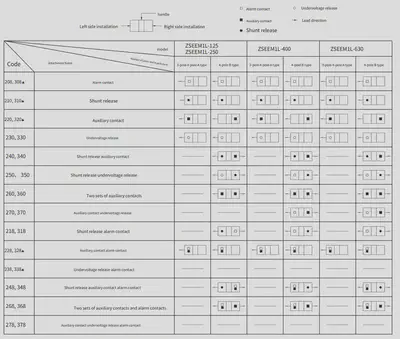
Main Performance Indicators of ZSEEM1L Series Residual Current Protection Circuit Breaker
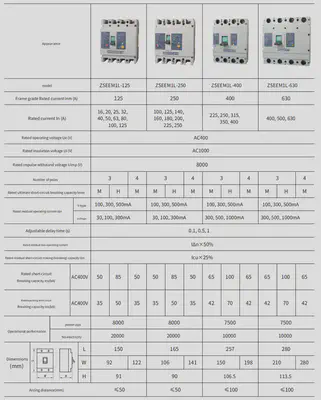
Characteristic Curves of ZSEEM1L Series Residual Current Protection Circuit Breaker
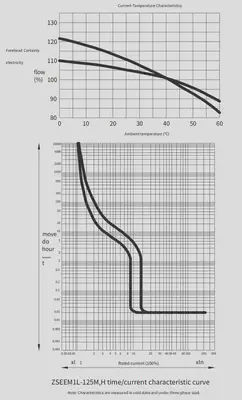
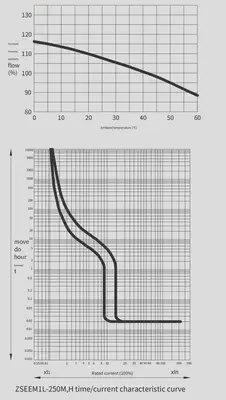
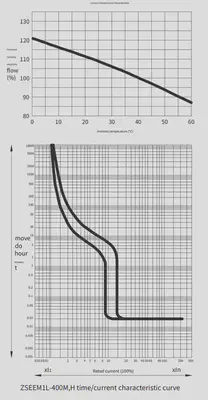
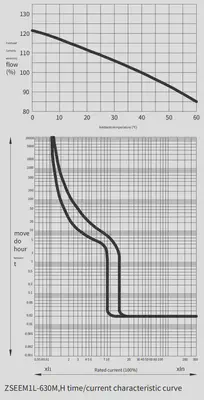
Residual Current Protection Characteristics Curve of ZSEEM1L Series Residual Current Protection Circuit Breaker
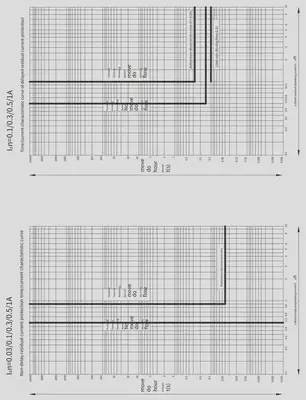
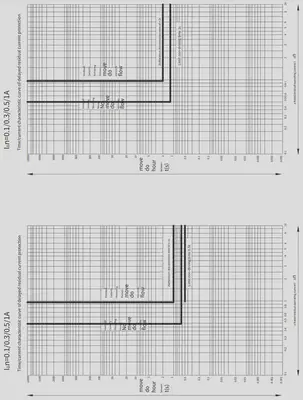
Current Protection Characteristics (Tripping Mechanism Performance) of the Circuit Breaker
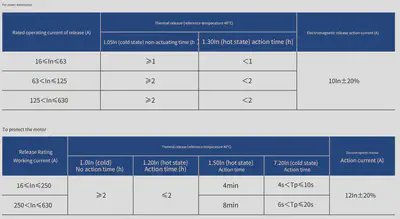
Residual Current Protection Operating Time of ZSEEM1L Series Residual Current Protection Circuit Breaker

Temperature Derating Factor of ZSEEM1L Series Residual Current Protection Circuit Breaker

Dimensions and Installation Size of ZSEEM1L Series Residual Current Protection Circuit Breaker
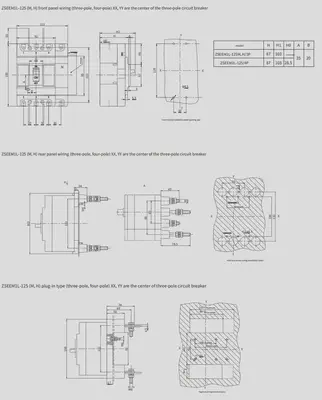
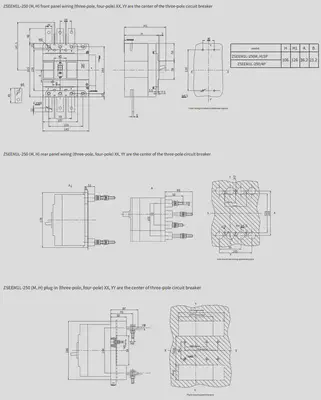
Dimensions and Installation Size of ZSEEM1L Series Residual Current Protection Circuit Breaker
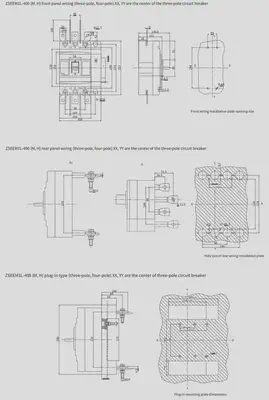
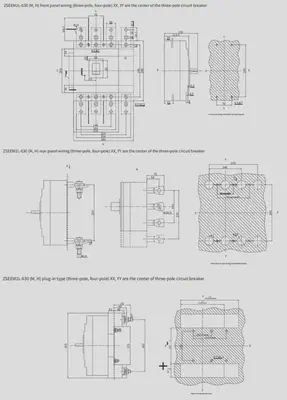
Internal and External Accessories of ZSEEM1L Series Residual Current Protection Circuit Breaker
Shunt Trip Series
The shunt trip is a tripping device triggered by a voltage source, independent of the main circuit voltage. It allows remote operation of the breaker.
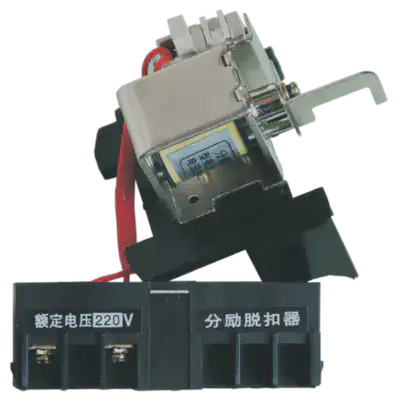
Undervoltage Trip Series
An undervoltage trip is a tripping device that disconnects the breaker when the incoming voltage drops to a specified range. When the power voltage drops (even gradually) to 70%-35% of the rated working voltage, the undervoltage trip operates. When the voltage reaches 35% of the rated working voltage, it prevents the breaker from closing.
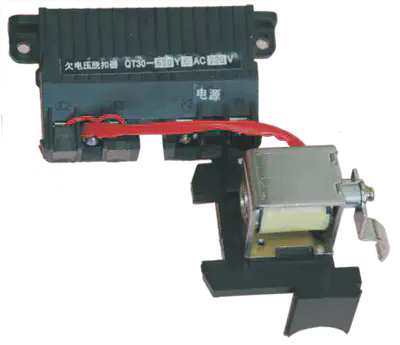
Auxiliary Contacts Series
Auxiliary contacts are mechanically linked to the main circuit break/make mechanism, mainly used to display the breaker’s status. Connected to the control circuit of the breaker, they implement control or interlocking of related electrical equipment.
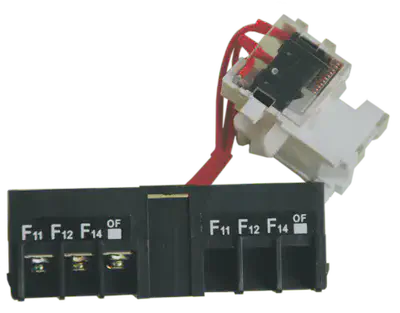
Alarm Contacts Series
Alarm contacts are used for fault alerts in the breaker. They are activated only when the breaker trips and disconnects, signaling overload, short circuit, or undervoltage issues.
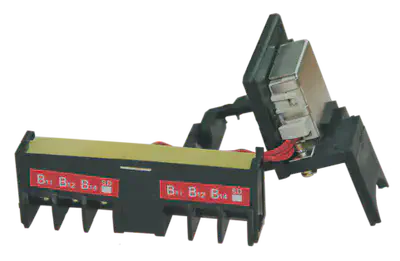
Auxiliary Alarm Contacts Series
Auxiliary alarm contacts are used for automatic control of the breaker’s control circuit and for signaling overcurrent, short circuit, or undervoltage issues in the circuit and equipment.
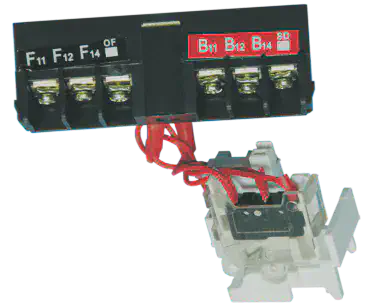
Manual Operating Mechanism Series
Turn the operating handle, suitable for external operation of molded case circuit breakers. When the handle is turned, it ensures that the breaker cannot be closed when the cabinet door is open. In an emergency, if the breaker is in the “closed” position and the door panel needs to be opened, press the red release button located on the side of the handle base.

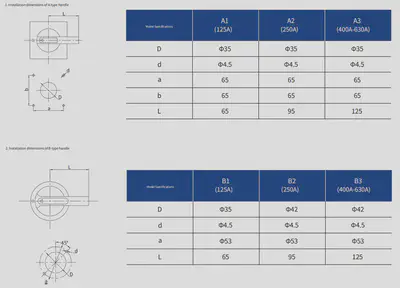
Mechanical Interlock
The mechanical interlock is a switching device that can connect two circuit breakers with the same external accessory, preventing both breakers from being closed or opened simultaneously.
